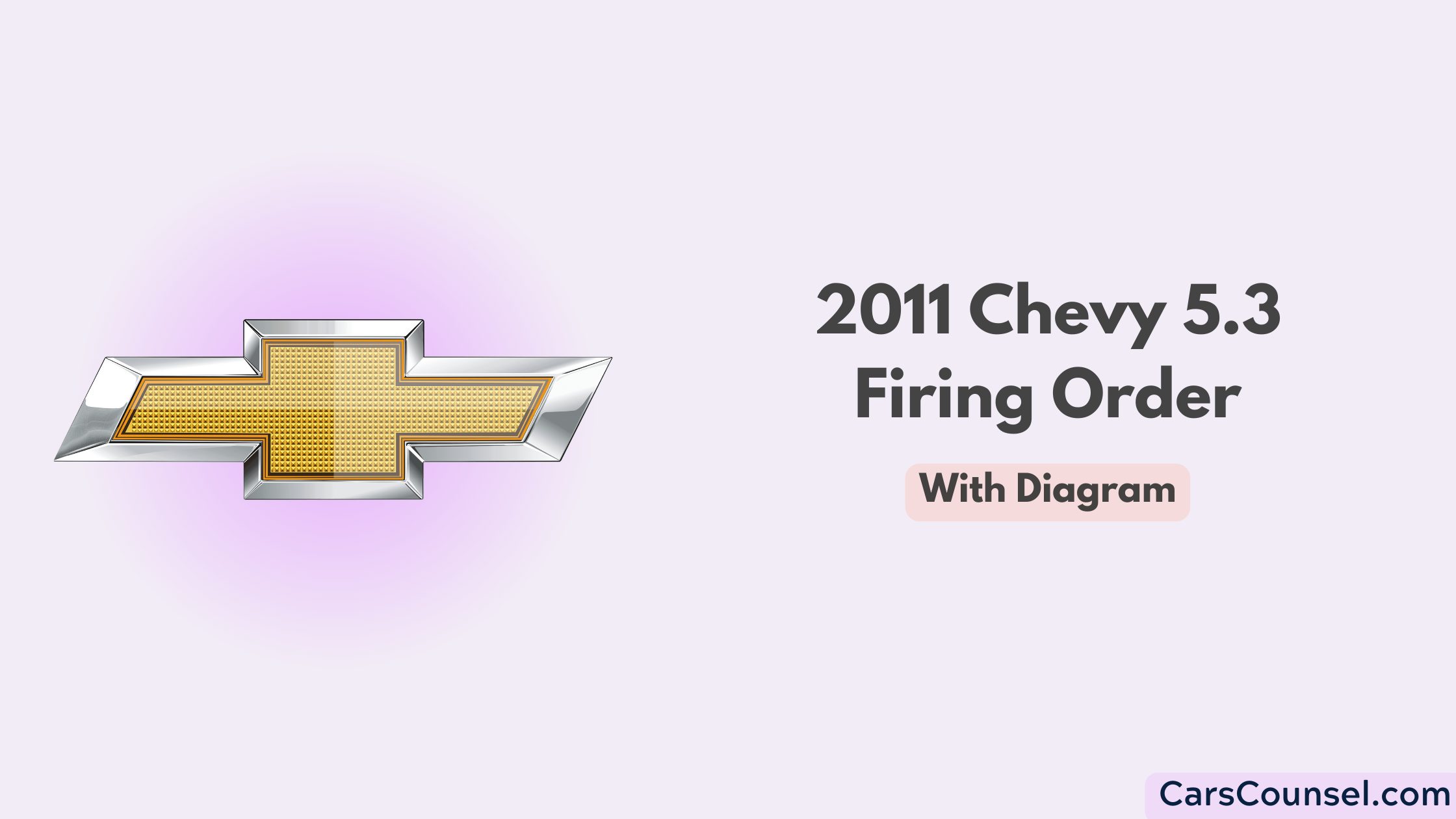The way your 2011 Chevy 5.3’s engine fires is in this order: 1-8-7-2-6-5-4-3. This order is really important for your engine to work well and efficiently. If the order is wrong, it could cause problems like uneven power or extra wear and tear on the engine parts.

Make sure your spark plugs are set up to match this order. If you look at your car’s detailed diagram, it can help you understand this better. There’s a lot more to know about this, like how regular checks of your spark plugs can help your engine run well for a long time.
Quick Navigation
Key Takeaways
- The firing order for a 2011 Chevy 5.3 is 1-8-7-2-6-5-4-3. This order tells us which cylinder fires at what time.
- This order is very important because it helps the engine run smoothly and efficiently.
- If you change this order, it can cause the engine to run poorly and even damage it.
- Regular care includes making sure the spark plugs are in the right order and checking if they’re in good condition.
- A picture showing the order can be really helpful when you’re doing maintenance.
Understanding 2011 Chevy 5.3 Firing Order

Knowing the 2011 Chevy 5.3 firing order is important. This order, 1-8-7-2-6-5-4-3, tells us the order in which the cylinders of the engine light up. This order is carefully planned to make sure the engine works at its best. It helps balance the power of the engine and makes it more efficient.
It’s also important to know about ignition timing. This is the exact time when the spark plug lights the fuel-air mix in the cylinder. In the 2011 Chevy 5.3, the firing order controls this timing and helps your engine run smoothly.
Potential Consequences of Modifying Firing Order
If you try to change the way your 2011 Chevy 5.3 engine fires, you could cause a lot of problems. The engine’s firing order, which is 1-8-7-2-6-5-4-3, is set up to give the best power and smoothness. If you change this, power mightn’t be delivered evenly, which could make your engine run badly. This could also put extra stress on other parts of the engine, which could make it less reliable over time.
Also, changing the firing order could cause issues with detonation, which is when the engine combusts too early. This can really damage your engine. So, any benefits you might get from changing the firing order aren’t usually worth the risks. It’s better to stick with the way things are set up for the best performance and reliability.
Maintenance and Similar Firing Orders
Making sure that your 2011 Chevy 5.3 engine follows the correct sequence for firing, which is 1-8-7-2-6-5-4-3, is very important for the engine to work at its best. Interestingly, several other Chevy models also use this same sequence. This common sequence helps to reduce shaking and increase the engine’s performance.
You should pay close attention to the position of the spark plugs. They need to match up with the firing sequence. If they don’t, the engine mightn’t work properly, which can decrease its efficiency and power. It’s also a good idea to regularly check the condition of your spark plugs and their connections because wear and tear can cause problems with how your engine works. Remember, keeping to the correct firing sequence will help your engine last longer and perform better.
Engines with Similar Firing Orders
Conclusion
Now you understand the basics of the 2011 Chevy 5.3 firing order. Don’t forget, changing this sequence might cause problems like what happened to Joe. He changed the firing order for his Silverado and it led to less efficient fuel use and worse engine performance. Stick to the 1-8-7-2-6-5-4-3 sequence, and your Chevy will give you the performance it was made for.
In the end, knowing and keeping the correct firing order is key to keeping your vehicle in good shape.

